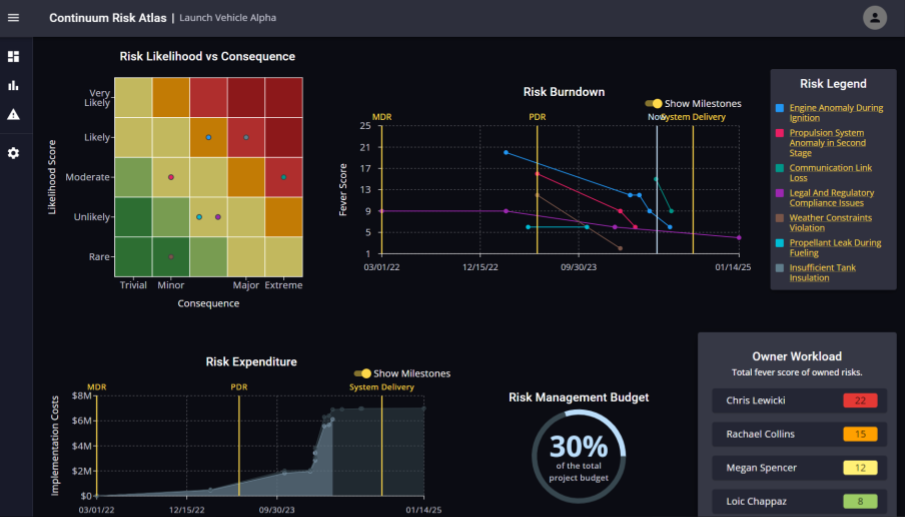
Personal Aircraft Point to the Future of Transportation
Originating Technology/NASA Contribution
In the late 1970s, general aviation (GA) in the United States was experiencing its heyday. In 1978, as many as 18,000 GA aircraft were produced. But only 15 years later, the industry was on the verge of collapse, with fewer than 1,000 aircraft produced in 1993.
One of the reasons for this decline was the lack of technological development that exposed the industry to safety and efficiency concerns. NASA, however, saw great potential within the GA industry to revolutionize the U.S. transportation system. With congestion growing both on the roads and in the skies, the Agency envisioned a Small Aircraft Aviation System, or SATS, in which improved GA aircraft would serve as an efficient travel option for round-trip distances too long to comfortably drive but too short to be practical for regular commercial airline service. Making use of the Nation’s 19,000 airports (of which 14,000 are privately operated), SATS would provide an alternative to crowded highways and the overburdened hub-and-spoke airline system.
In order to facilitate the creation of SATS, GA aircraft needed to become cheaper to produce, quieter and more fuel efficient, and easier and safer to fly. In 1994, NASA and the Federal Aviation Administration (FAA) joined with private industry, academia, and nonprofits to form the Advanced General Aviation Transport Experiments (AGATE) consortium. Consisting of about 70 members and led by NASA’s Langley Research Center, AGATE sought to revitalize the GA industry and help drive the technological innovation needed to make SATS viable. Among the technologies AGATE focused on were safety and crashworthiness improvements, guidance systems, aerodynamically efficient airfoils, and manufacturing processes.
While AGATE ended in 2001, NASA continues to inspire the GA industry through efforts like the upcoming 2011 Green Flight Challenge, which seeks to demonstrate personal aircraft featuring maximized fuel efficiency, improved safety, and reduced noise. In the meantime, innovations with origins in the AGATE program continue to shape general aviation today.
Partnership
Among the primary tools AGATE employed to stimulate innovation and technology transfer were the Small Business Innovation Research (SBIR) and Small Business Technology Transfer (STTR) programs. Companies that received Phase II SBIR or STTR contracts were invited to join the AGATE consortium, further encouraging collaboration among government, academic, and industry partners.
One such company was Cirrus Design Corporation, based in Duluth, Minnesota. Founded in 1984, Cirrus’ first product was an experimental aircraft, the VK-30. The company was keen on improving personal aircraft performance by making use of natural laminar flow; vehicles that take advantage of this property experience significantly less drag and thus fly faster and with better fuel efficiency. The VK-30 featured a natural laminar flow airfoil (the NLF-414F) designed by Langley engineer Jeff Viken. The problem with manufacturing the airfoil, however, was that production methods that used aluminum to craft the wing ultimately destroyed the laminar flow properties of the airfoil.
Through SBIR contracts with Langley, Cirrus worked on developing low-cost manufacturing methods using composite materials, which would provide a strong, lightweight aluminum alternative that preserved natural laminar flow. At the time, composites were used either for boats or for high-end military aircraft, says Cirrus chief engineer, Paul Johnston.
“We needed the composites to be aerospace quality but more in line cost-wise with what it would take to make a boat,” he says. Cirrus’ SBIR work resulted in significant composite manufacturing expertise and a pre-impregnated composite that could be readily mass-produced.
Additional SBIR work with Glenn Research Center explored electroexpulsive deicing systems to help ensure safe operation in dangerous icing conditions. While this technology ultimately proved commercially impractical for Cirrus, the company developed a method under the SBIR for mating the system to aircraft wings without disrupting their natural laminar flow. Cirrus later applied the same method to install glycol “weeping wing” systems, providing chemical icing protection without sacrificing performance.
Product Outcome
Cirrus employs both of these SBIR-derived benefits in the production of its industry-leading aircraft today. The Cirrus SR20 and the faster, more powerful SR22 and SR22 TURBO personal aircraft are currently among the most popular GA aircraft in the world; the SR22 has been the top-selling FAA-certified single-engine airplane every year since 2002.
Among the features that have earned Cirrus planes such popularity are a host of innovations with NASA connections. Perhaps the most important are the comprehensive safety features. GA aircraft typically fly at too low of an altitude to recover from a spin in time to avoid impact. NASA researchers in the 1970s and ’80s focused on methods to help prevent aircraft from getting into a spin in the first place. Cirrus now employs a NASA-designed “drooped” leading edge on its airfoils that lowers stall speed and greatly increases spin resistance. In addition, through crashworthiness testing in the late 1990s—using Langley’s Landing and Impact Research Facility, a 240-foot-high gantry originally built to train Apollo 11 astronauts for their historic Moon landing—Cirrus incorporated design features to improve survivability during stall/spin impacts.
“We also tested airbags,” says Johnston. “There were no such thing as airbags in airplanes at the time, and now that’s an option on all of our planes.” Cirrus offers AmSafe Aviation Inflatable Restraints—seatbelt airbags—and was the first aircraft manufacturer to install the devices.
Another major safety feature is the Cirrus Airframe Parachute System, a whole-aircraft parachute capable of rescuing not only the pilot and passengers, but the entire plane. Invented by BRS Aerospace Inc. with NASA SBIR support (Spinoff 2002, 2010), the technology is standard on all Cirrus aircraft and has saved 35 Cirrus pilot and passenger lives to date.
Also key to enhancing safety are innovations that make Cirrus planes easier to fly.
“The AGATE program looked at how to take the essential information pilots need and display it to them in a manner that is intuitive and easy to use,” says Johnston. One of AGATE’s major contributions was the advancement of glass cockpit technology. (This does not refer to an airplane’s windows. Rather, a “glass cockpit” features electronic instrument displays.) Among these technologies were synthetic vision systems that create three-dimensional renderings of the environment outside the aircraft, helping a pilot navigate, read the terrain, identify obstacles, and negotiate airborne traffic. One synthetic vision feature was the “Highway in the Sky,” or HITS, a technology developed by avionics company Avidyne under a NASA contract. HITS simplified navigation by displaying boxes on the aircraft’s screen that the pilot can (virtually) fly through—much like a video game. All of Cirrus’ aircraft incorporate this technology, either through an Avidyne system or the new Cirrus Perspective synthetic vision system.
“This technology presents the pilot with the information necessary to fly without requiring the massive amounts of training and proficiency needed with the previous instrumentation,” says Johnston. “It becomes easy to take on flight tasks that were once only for the highest experts.”
The company’s latest venture represents the newest wave of GA aircraft: the very light jet, or VLJ. Cirrus is developing its Vision personal jet, which the company promises will be lighter, quieter, and more efficient than other personal aircraft—another step toward making SATS a viable reality. The Vision is powered by the FJ33 turbofan engine, developed by engine manufacturer Williams International as part of the General Aviation Propulsion project, representing yet another legacy of the NASA-led AGATE program.
“NASA plays a role in looking at the transportation infrastructure as a whole and figuring out how to make it as efficient as possible to serve the most people with the least amount of resources,” says Johnston.
“I don’t think much of what you see in general aviation today would be around if NASA had not laid the foundation.”
AmSafe Aviation Inflatable Restraint® is a registered trademark of AmSafe Inc.
Cirrus Airframe Parachute System™ and Cirrus Perspective™ are trademarks of Cirrus Design Corporation.
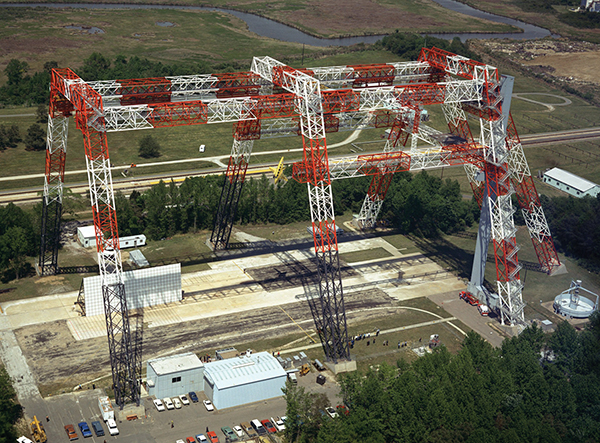
Originally built to allow Apollo astronauts to practice landing on the Moon, this 240-foot-high gantry is now Langley Research Center’s Landing and Impact Research Facility.
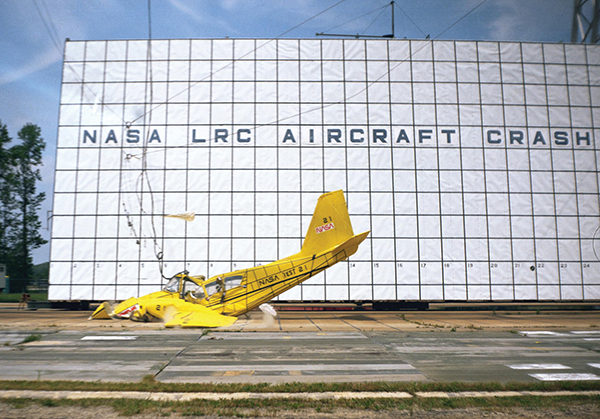
Crashworthiness testing at the facility allowed Cirrus Design Corporation to improve survivability during stall/spin impacts.
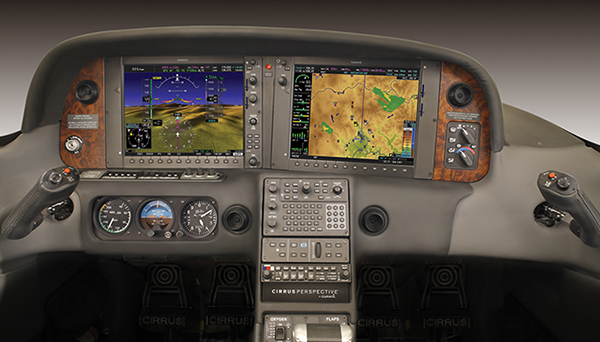
Cirrus’ synthetic vision systems trace their roots to innovations in glass cockpit technology developed under the NASA-led Advanced General Aviation Transport Experiments consortium.
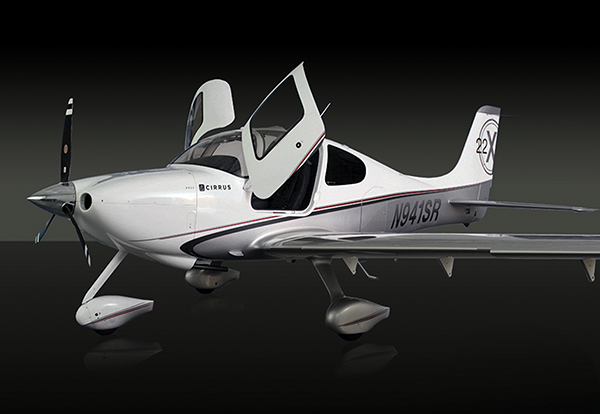
Featuring a host of NASA-derived design and technology features—including an additional NASA spinoff, the standard Cirrus Airframe Parachute System manufactured by BRS Aerospace Inc.—the Cirrus SR22 is the top-selling FAA-certified single-engine airplane in the world.
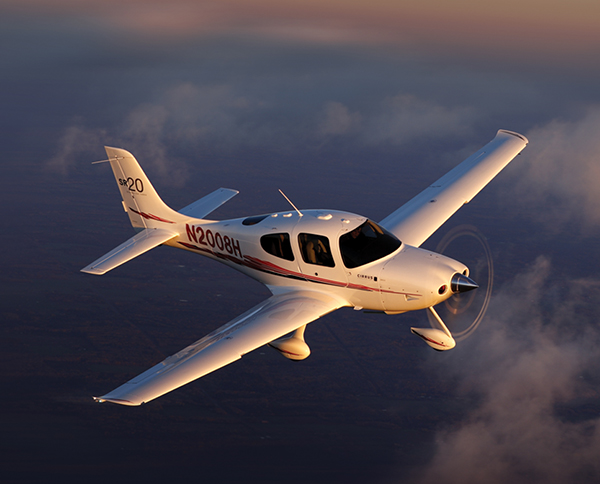
The Cirrus SR20 benefited from low-cost composite materials manufacturing that Cirrus developed through SBIR contracts with Langley.

Powered by a turbofan engine designed as part of the NASA General Aviation Propulsion project, the Cirrus Vision jet promises to provide the kind of quiet and efficient flight option that could make such vehicles viable, commonplace options for personal travel in the future.





